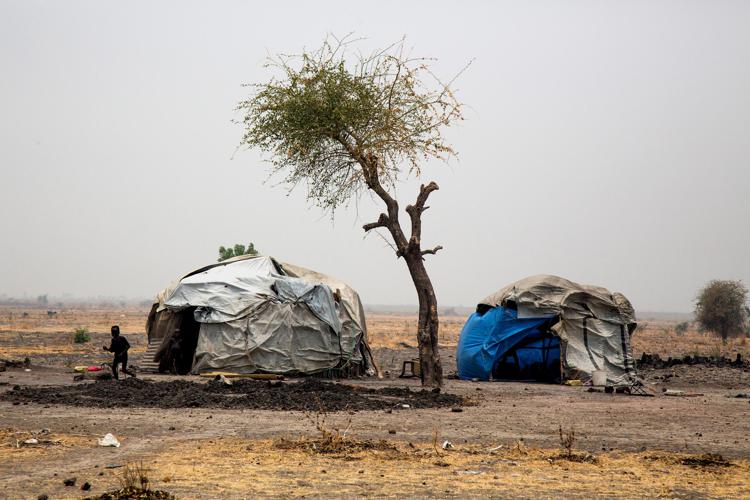

More than 7 million people in South Sudan - almost two-thirds of the population are at risk of famine without robust humanitarian assistance and access to the war-wracked country, three United Nations agencies warned on Monday.
This year, the highest ever number of people in South Sudan are facing food insecurity and it is set to be the toughest on record, according to government and UN officials.
"The situation is extremely fragile and we are close to seeing another famine. The projections are stark. If we ignore them, we'll be faced with a growing tragedy," said the UN Food and Agriculture Organisation's representative in South Sudan, Serge Tissot.
The period of greatest risk will be the lean season, between May and July, FAO, the UN Children's Fund (UNICEF) and the World Food Programme (WFP) warned.
Especially at risk are 155,000 people, including 29,000 children, who could suffer from the most extreme levels of hunger, said FAO.
"We are preparing for rates of severe malnutrition among children never before seen in this country," said Mahimbo Mdoe, UNICEF's Representative in South Sudan.
"Without an urgent response and access to those most in need, many children will die. We cannot allow that to happen."
In January, 5.3 million people, or nearly half of the population, were already struggling to find enough food each day and were in "crisis" or at "emergency" levels of food insecurity, according to a new report, FAO said.
This represents a 40 percent increase in the number of people at risk of starvation and malnourishment compared to January 2017, said the agency.
The new report comes one year after improved access and a massive humanitarian response succeeded in containing and averting famine declared in parts of the oil-rich East African nation in February 2017.
Despite this, the food insecurity outlook has never been so dire as it is now and the situation is deteriorating with each year of South Sudan's ethnically charged civil war that broke out in 2013, FAO underlined.
Overall hunger levels have risen due to the conflict, which has led to reduced food production amid economic collapse which impacted markets and trade, drought, flooding and continued pest infestations, FAO said.
"If farmers receive support to resume their livelihoods, we will see a rapid improvement in the country's food security situation due to increased local production," Tissot said.
The lean season when the harvest runs out is expected to start this year much earlier than usual," WFP representative and country director Adnan Khan warned.
"Unless we can pre-position assistance rather than mount a more costly response during the rains, more families will struggle to survive," Khan stated.
WFP is pre-positioning food in areas likely to be cut off during the rainy season, so people will not go hungry, the UN said.
WFP plans to pre-position 140,000 metric tonnes of food supplies in over 50 locations across South Sudan this year - 20 percent more than in 2017, according to the UN.
But conflict and worsening hunger have led to already soaring rates of malnutrition in South Sudan, FAO said.
Without assistance, more than 1.3 million children under five will be at risk of acute malnourishment by May as many communities become isolated when the rainy seasons starts in April and are cut off from medical aid, the agency warned.
FAO said it has also vaccinated more than 6.1 million livestock to keep alive and healthy the animals that most South Sudanese depend on for their survival.
At the peak of its response this year, WFP aims to reach 4.4 million people with life-saving food and nutrition assistance.
Last year, FAO, WFP, UNICEF and their partners rolled out their largest ever aid campaign and with agency partners conducted more than 135 rapid humanitarian missions to the most hard-to-reach areas, giving life-saving assistance to over 1.8 million people.
FAO provided five million people - many in difficult-to-reach or conflict-affected areas - with seeds and tools for planting, and fishing kits in 2017, the agency said.